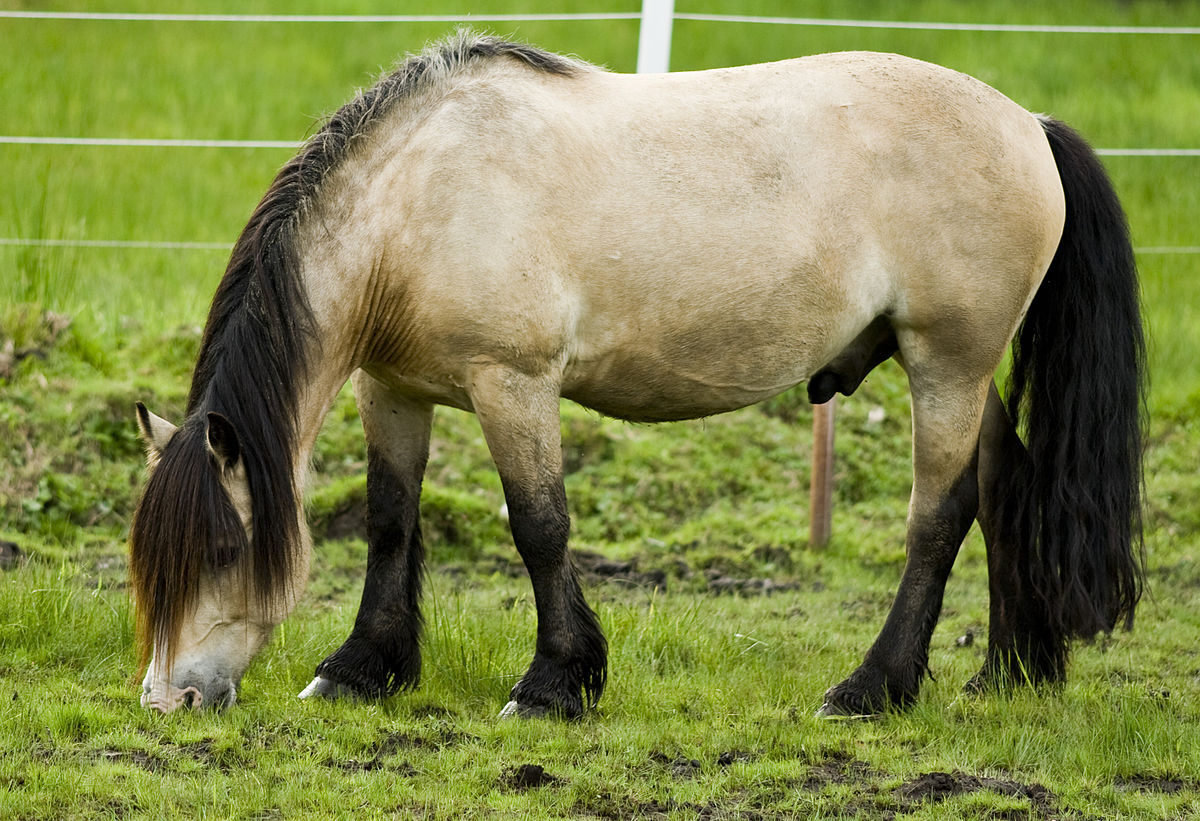Horses represented a way of life for thousands of years in Norway, and many breeds originated there, although some, like the Dole Gudbrandsdal horse, are not as well known as the Norwegian Fjord and other breeds. This hardy and elegant draft animal has evolved into two breeds and continues contributing to agricultural and forestry work, as draft animals, and in harness racing.

Gudbrandsdal is a region of Norway, located in a valley in the northwestern section of the country. Here, life on the land can be challenging, a devastating flood in 1789 is still the worst one in Norway’s history.
The people were hardy and survived, in part because of their horses, the Dole Gudbrandsdal horse. Dølahest or Dole are other names for the breed. Agility and strength are two of their defining characteristics. The breed began as small, draft pack horses and has evolved into their current draft uses, as harness racers, for pulling sleighs, and riding.
History of the Dole Gudbrandsdal Horse
There are incredible similarities between the Dole Gudbrandsdal horse, the Friesian, and the Fell and Dales ponies from Britain. This is because of common ancestors among all breeds, and it’s all part of the history of the Dole Gudbrandsdal horse.
Friesian people frequently traded in the Gudbrandsdal valley between 400 and 800 AD. Trading horses was probably one of their activities. The Friesian and the Dole Gudbrandsdal horse resemble each other. Later, between the 9th and 11th centuries, there was active trading between Norway and northern England, and this is where the connection and similarities with the Dale and Fell ponies come in. These three breeds all developed around the same time.
Pack and other uses continued being a primary driver of Dole Gudbrandsdal horse breeding. They used Thoroughbred and Arabian blood to improve the horses for trotting. Odin was a Thoroughbred stallion they imported to Norway in 1834. He cost £257 – an incredible amount at the time. He bred over 100 mares in his first four years there. Bloodlines today still demonstrate his significance.

Breed Characteristics
Breed characteristics of the Dole Gudbrandsdal horse are consistent and make them easy to recognize. Horses are usually between 14.1 and 15.3 hands with the heavier draft horse weight of 1,200 to 1,400 pounds. Their colors are also fairly consistent, with bay, brown, and black the most common. The breed registry allows palominos, duns, grays, and chestnuts. These colors usually stand out because there are fewer of them.
Horses have heavy heads and kind eyes, with short, muscular necks. Their entire body is muscular – the neck, legs, shoulder, back, and croup – all show the same muscular function that makes the breed so adept as pulling horses. They’re also wide and deep in the chest and body, again, a typical draft characteristic.
Dole horses are hardy and agile, characteristics that undoubtedly developed in the tougher climate they lived in. Overall, they’re also kind and intelligent horses, making willing partners for the people that own and use them. They are one of the smaller draft breeds. Dole horses are in use because of the mixture of qualities.
The Dole Trotter
Dole Trotters are a subtype of the Dole Gudbrandsdal horse and are considered a separate breed. Harness racing was the purpose behind creating them. Trotters are smaller and faster than the Dole Gudbrandsdal horse.
Harness racing’s rise in popularity in Norway was during the 1800s. This is where the Thoroughbred and Arabian blood predominantly came in. The stallions Toftebrun and Dovre were instrumental in creating the Dole Trotter subtype.
The Trotters are also bred with the original breed. The more refined characteristics with substance are now found in both. Breeding horses have to pass inspections prior to registration. Track tests and knee x-rays are also conducted. Other breeds have used Dole horses to strengthen their own bloodlines.
Crossbreeding between the two sub-types is making it hard to maintain the distinction between them. The Dole Gudbrandsdal is elegant and refined. They also have substance since they’re bred for draft and harness work. Their ground-covering strides are also smooth, and this makes them a great option as a riding horse too.
Dole Gudbrandsdal Horses Today
The Dole Gudbrandsdal horse suffered many of the same effects that other draft breeds did following farm mechanization. Their numbers plummeted after World War II. Then, the National Dolehorse Association was created in Norway in 1967. They work to preserve the heavy draft horses.
Today, thanks to the work of many people, the Dole Gudbrandsdal population has recovered to around 4,000 horses, with most In Norway. They are used in forestry work. Horses also give sleigh rides and help the booming winter tourism industry in Norway. Tourists and others also ride Dole horses up into the mountains to explore. The breed continues receiving support from the Norwegian Horse Center in Starum, Innlandet.
They represent a way of life, the resilience of the people to survive the tougher climate conditions, and are willing and eager partners for whatever work comes their way.
Sources: Norwegian Dole Horse Association, Nordgen, Oklahoma State University, and Visit Norway.
